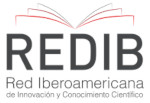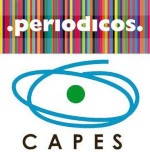O paradoxo entre inovação e isomorfismo:
duas teorias de um mesmo mercado
DOI:
https://doi.org/10.31994/rvs.v11i1.628Palavras-chave:
Inovação, Isomorfismo, organizações, mercadoResumo
Este artigo visa corroborar com o entendimento dos termos isomorfismo e inovação quando tratados de forma conjunta para a análise das organizações. Para tanto, faz-se uso de um ensaio teórico que visa a compreensão, à luz da literatura, sobre a junção destes conceitos e sobre a influência positiva e negativa das práticas de inovação e de isomorfismo nas organizações. Este estudo apresenta um esboço para compreensão do fenômeno cíclico da inovação e isomorfismo presentes no mercado e do aprofundamento desta prática das organizações em determinados momentos do mercado.
Downloads
Referências
ANDREASSON, L.; HENFRIDSSON, O. Digital differentiation, software product lines, and the challenge of isomorphism in innovation: A case study. ECIS European Conference on Information Systems, 23, 2009.
ARNDT, M.; BIGELOW, B. Presenting structural innovation in an institutional environment: Hospitals' use of impression management. Administrative Science Quarterly, V. 45, Ed. 3, 2000.
BARBIERI, J. C. Organizações inovadoras: estudos e casos brasileiros. FGV Editora, 2003.
BESANKO, D., DRANOVE, D., & SHANLEY, M. Economics of Strategy. New York, John Wiley & Sons, 2000.
BONINI, L. A., & SBRAGIA, R. O modelo de design thinking como indutor da inovação nas empresas: um estudo empírico. Revista de Gestão e Projetos, 2011.
BROWN, S. L.; EISENHARDT, K. M. The art of continuous change: linking complexity theory and time-paced evolution in relentlessly shifting organizations. Administrativeence Quarterly, Vol. 42, No. 1, pp. 1-34, 1997.
CHRISTENSEN, C.; CRAIG, T.; HART, S. The Great Disruption. Foreign Affairs, Vol. 80, No. 2, 2001.
CZINKOTA, M.; KAUFMANN, H. R.; BASILE, G. The relationship between legitimacy, reputation, sustainability and branding for companies and their supply chains. Industrial Marketing Management, v. 43, n. 1, p. 91-101, 2014.
DAVILA, T., EPSTEIN, M. J., & SHELTON, R. As regras da inovação. Bookman, 2008.
DIMAGGIO, P.J., & POWELL, W.W. A gaiola de ferro revisitada: isomorfismo institucional e racionalidade coletiva nos campos organizacionais. Revista de Administração de Empresas, 45(2), 74-79, 2005.
EISENHARDT, K. M.; MARTIN, J. A. Dynamic capabilities: What are they? Strategic Management Journal, 21(10-11), 1105-1121, 2000.
FREEMAN, C., PEREZ, C. Structural crisis of adjustment, business cycles and investment behaviour. Technical Change and Economic Theory. Pinter Pub., London, 1988.
GOVINDARAJAN, V.; KOPALLE P. K.; DANNEELS, E. The Effects of Mainstream and Emerging Customer Orientations on Radical and Disruptive Innovations. Journal of Product Innovation Management, 28(S1):121–132, 2011.
GULER, I.; GUILLEN, M. F.; MACPHERSON, J. M. Global competition, institutions, and the diffusion of organizational practices: The international spread of ISO 9000 quality certificates. Administrative Science Quarterly, V. 47, Ed. 2, 2002.
HAUNSCHILD, P. R.; MINER, A. S. Modes of interorganizational imitation: the effects of outcome salience and uncertainty. Administrative Science Quarterly, Vol. 42, 1997.
INZELT, A. Institutional Support for Technological Improvement -The Case of Hungary. Technological Forecasting and Social Change, Vol.51 No.1, pp.65-93, 1996.
JOÃO, J. C. O.; MACHADO, D. D. P. N. Teoria Institucional: aderência às normas de RH em agências bancárias. Revista Eletrônica Gestão e Sociedade, v. 5, n. 12, 2012.
KONDRA, A. Z.; HININGS, C. R. Organizational diversity and change in institutional theory. Organization studies, Vol. 19 No. 5, pp.743-767, 1998.
MADRID-GUIJARRO, A., GARCIA, D. & AUKEN, H. V. Barriers to innovation among Spanish manufacturing SMEs. Journal of Small Business Management, v. 47, n.4, 2007.
NALD, M. L., WESTPHAL, J. D. Getting by with the advice of their friends: ceos' advice networks and firms' strategic responses to poor performance. Administrative Science Quarterly, Vol. 48, No. 1, pp.1-32, 2003.
O´REILLY III, C. A.; TUSHMAN, M. L. Ambidexterity as a dynamic capability: resolving the innovatior´s dilemna. Research in Organizational Behavior, 185-206, 2008.
SAWHNEY, M., WOLCOTT, R. C., & ARRONIZ, I. The 12 different ways for companies to innovate. Top 10 Lessons on the New Business of Innovation, 47, 28, 2011.
SCHUMPETER, J. A. Capitalismo, Socialismo e Democracia. Rio de Janeiro: Editora Fundo de Cultura, 1961.
SCHUMPETER, J. A. Teoria do desenvolvimento econômico. Abril Cultural, SP, 1982.
SCHUMPETER, J. A. The Theory of Economic Development. Harvard University Press, Cambridge Massachusetts, 1934.
SILVA, N. E. F.; COELHO, P. F. da C.; CAVALCANTE, C. E. Isomorfismo e sustentabilidade: análise nas empresas do setor elétrico brasileiro. Exacta – EP, São Paulo, v. 14, n. 2, p. 251-268, 2016.
SMITH, K. Measuring innovation. The Oxford Hanbook of Innovation (pp. 149-177). Oxford, UK: Oxford University Press, 2005.
SOUZA, E. M.; MENEZES, R. A. G.; FRANCO, C.; BATISTA, P. C. S. Inovação Como Mecanismo de Fuga do Isomorfismo Organizacional. Revista Gestão & Tecnologia, v. 13, n. 2, p. 72-93, mai./ago. 2013.
TIDD, J., BESSANT, J. & PAVITT, K. Managing innovation: integrating technological, market and organizational change. West Sussex: John Wiley & Sons, 2005
TIDD, J.; BESSANT, J.; PAVITT, K. Managing innovation – integrating technological, market and organizational change. England: John Wiley & Sons Ltd, 2001.
TONDOLO, V. A. G.; BITENCOURT, C. C. Compreendendo as Capacidades Dinâmicas a partir de seus antecedentes, processos e resultados. Brazilian Business Review, 2014.
ZHANG, H.; HU, B. The effects of organizational isomorphism on innovation performance through knowledge search in industrial cluster. Chinese Management Studies, Vol. 11, 2017.
Downloads
Publicado
Como Citar
Edição
Seção
Licença
Copyright (c) 2020 Revista Vianna Sapiens

Este trabalho está licenciado sob uma licença Creative Commons Attribution-NonCommercial 4.0 International License.











